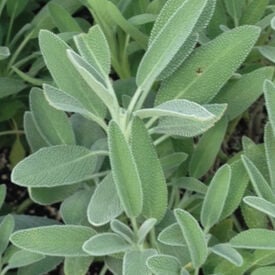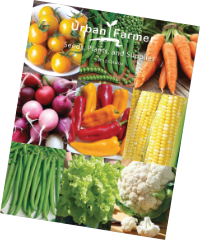Learn More
White sage, scientifically known as Salvia apiana, has silvery-gray leaves and aromatic, slender stems, white sage is highly valued for its fragrant, cleansing properties. The leaves have a strong, earthy aroma when dried, making them popular for incense and herbal teas. LOW GERMINATION: White sage (Salvia apiana) seeds generally have a low germination rate, often around 15-30%, but can vary. This low rate is a survival mechanism for the plant in its native desert environment, where not all seeds need to germinate at once.
Broadleaf sage, also known as Salvia officinalis, is a robust perennial herb prized for its large, aromatic leaves and culinary versatility. Characterized by its broad, velvety gray-green leaves, this variety has a more pronounced flavor than some other sages, offering a warm, earthy taste with hints of mint and citrus. Native to the Mediterranean region, broadleaf sage is often used in cooking to enhance dishes such as meats, poultry, and stuffing, as well as in herbal teas. The plant thrives in well-drained soil and full sun, making it a favorite in herb gardens. Broadleaf sage is also valued for its medicinal properties, traditionally used for digestive health and inflammation. With its striking foliage and delightful aroma, this sage variety is both an attractive addition to gardens and a staple in kitchens.


